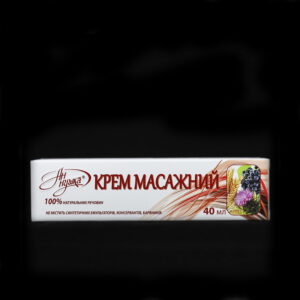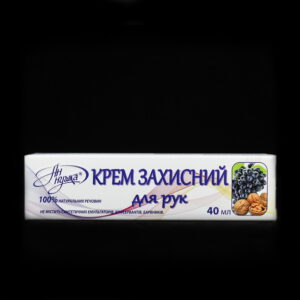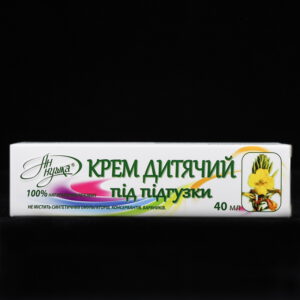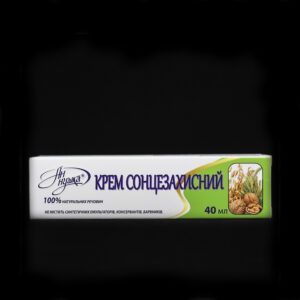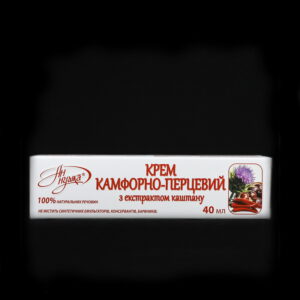Natural creams in tubes based on vegetable oils
Showing products: 6
Natural creams based on vegetable oils
People have used vegetable oil as a skin care product for centuries – sometimes it seems like we just forgot about it. Natural creams made on the basis of vegetable oils do not contain synthetic substances harmful to human health: GMOs, preservatives, emulsifiers, thickeners, dyes, parabens. And this minimizes the possibility of allergic reactions and provides high efficiency of protective and prophylactic properties.
For many people, the idea of putting something on their skin can sound crazy. But once you overcome this mental barrier, you will realize that using creams based on natural plant oils can bring great health benefits. Vegetable oils are natural emollients that are packed with vitamins and nutrients that are easily absorbed by our bodies. Your skin will not only be soft, but also nourished.
Everyone’s skin is different, and in order to find the right and suitable component of the cream, you need to experiment. You need to choose the exact composition of the cream that will be most effective for your skin. Give it a try and see if it works for you! The brand of the oil is not as important as the way it is extracted. Chemical and heat treatments can destroy the natural properties of the oil, so always buy cold-pressed oil and only natural oil. Be sure to read the instructions on the packaging, as well as in the product description!
Components of natural creams based on vegetable oils
In the production of creams, we use the following main components:
Pumpkin seed oil. Pumpkin seeds are a great source of energy when it comes to vitamins, minerals, omegas, and antioxidants. It is high in vitamins A, beta-carotene, B2, B3, potassium, magnesium and most importantly zinc. It is also high in omega-9, 6 and 3. Its high zinc content means it is a top choice when it comes to lifting and firming the face, neck, chest and body. Pumpkin seed oil also helps to stimulate skin cell regeneration and can help relieve skin irritation.
Amaranth seed oil. Amaranth oil is rich in natural tocopherols and tocotrienols (vitamin E complex), plant sterols (phytosterols), carotenoids and most importantly squalene, a lipid found naturally in the skin. Amaranth oil, having a high content of omega-6 and omega-9, quickly penetrates the skin. This ability to penetrate deeply into the skin tissue helps the oil transport other ingredients that cannot independently penetrate through the skin.
Walnut oil. This oil contains beneficial nutrients and compounds, including unsaturated fatty acids and plant compounds called polyphenols. The nutrients in walnut oil can promote good skin health. One tablespoon of walnut oil contains more than 8 grams, or more than 5 times the optimal intake of an omega-3 fatty acid called alpha-linolenic acid (ALA). This is why omega-3s, including those in walnut oil, can stimulate skin growth, fight inflammatory skin conditions, and promote wound healing.
Milk thistle seed oil. Milk thistle helps to improve skin health and anti-inflammatory skin condition. Milk thistle oil has antioxidant and anti-aging effects on human skin cells. Also, milk thistle is used as a natural remedy for a variety of health conditions. The active ingredient in milk thistle is called silymarin. It is mainly used to treat liver problems, but it can also lower cholesterol and help manage type 2 diabetes.
Coconut oil. It is suitable for all skin types. 50 percent of coconut oil is a fat called lauric acid, which is naturally found in breast milk, making it easily digestible and beneficial to the body, as well as to protect and nourish the skin. It is an incredible antimicrobial ingredient that also cleanses the skin.
Flax seed oil. Flaxseed oil can help improve skin health. It helps to improve the smoothness and hydration of the skin, while reducing the sensitivity of the skin to irritation and roughness. Flaxseed oil reduces symptoms of atopic dermatitis such as redness, swelling and itching.
Form of production of creams: convenient laminated tubes, 40 ml.
Precautions when using creams: hypersensitivity to individual components of the cream.
Shelf life of creams: 12 months from the date of production. After opening the tube, use the cream for 30 days.

